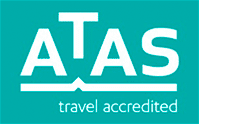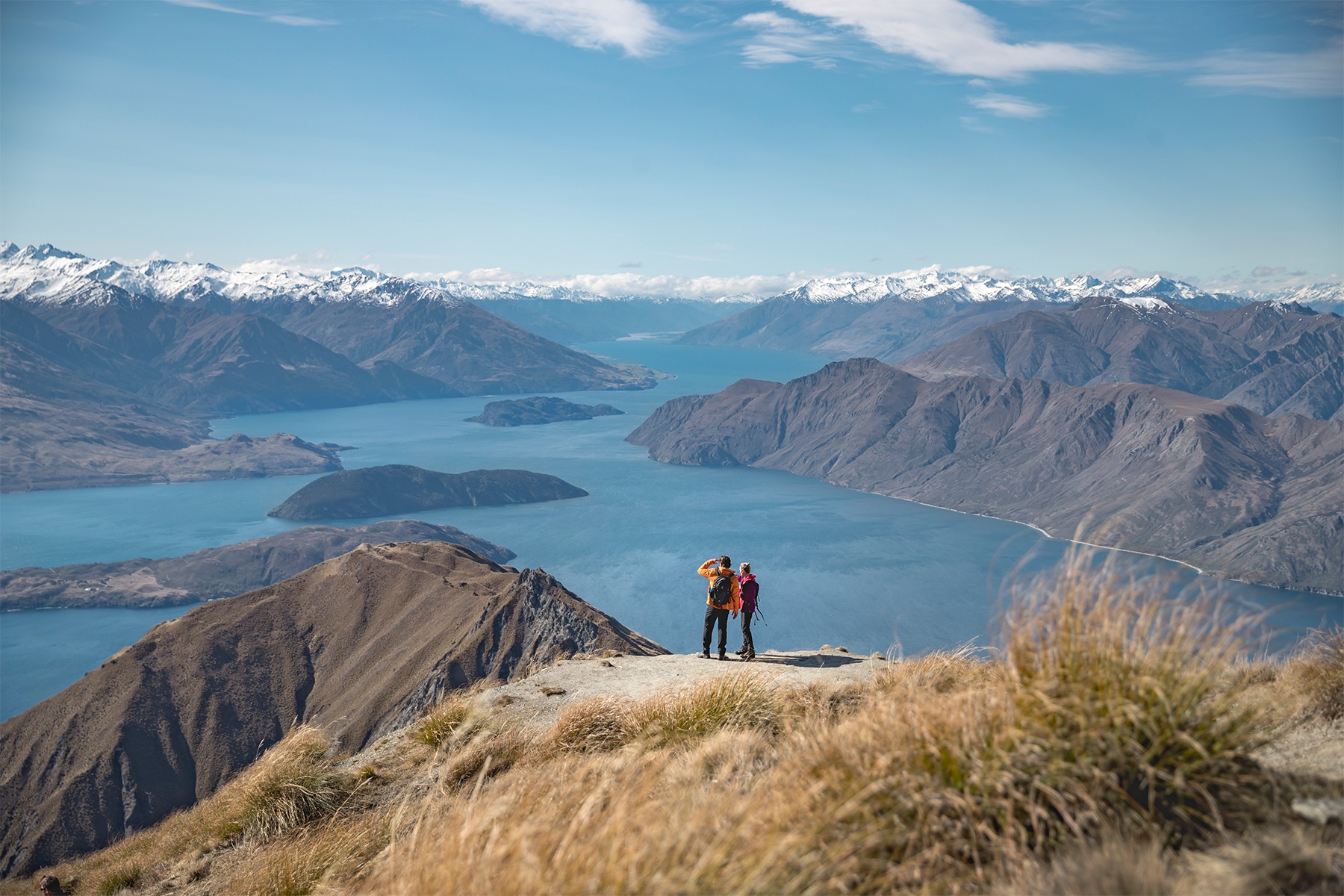Northern & Western Galapagos Islands
8 Days - Samba
The Samba accommodates 14 guests, a perfect number to enjoy the magic of the Islands with privacy and flexibility. Its professional, experienced and friendly crew and naturalist guide are devoted to go the extra mile to make your journey a trip of a lifetime. Along with the popular eastern side of the archipelago this 8 day cruise also travels to the volcanically active western side of the Islands which are interesting for their unique flora and fauna.
from AUD $7619pp

Home » 8 Day Samba: Northern & Western Galapagos Islands
Itinerary Highlights
- A great value small ship experience
- The opportunity to explore the Galapagos by sail boat
- Travel to both sides of the Galapagos islands and experience different scenery and wildlife.
Itinerary in Brief
- Day 1: Arrive to Baltra airport. Las Bachas, Santa Cruz
- Day 2: Darwin Bay, Genovesa Island / Price Philip’s Steps (El Barranco) - Genovesa Island
- Day 3: Punta Mejía, Marchena Island / Black beach - Marchena Island
- Day 4: Punta Albemarle, Isabela Island / Punta Vicente Roca - Isabela Island
- Day 5: Punta Espinoza, Fernandina Island / Urbina Bay - Isabela Island
- Day 6: Elizabeth Bay, Isabela Island / Punta Moreno, Isabela Island
- Day 7: Asilo de La Paz and Cerro Alleri, Floreana Island / La Lobería, Floreana Island
- Day 8: Santa Cruz Highlands - Depart Baltra
Day 1: Arrive Galapagos - Afternoon at Las Bachas
On arrival at Baltra Airport all visitors pay their entrance fee to the Galapagos National Park and get their hand luggage checked by the Quarantine system. You will then be met by the Samba’s naturalist guide, who will assist you with your luggage collection and accompany on a short bus ride to the harbor to board Samba.
After a light lunch the Samba will navigate for 25 minutes to Las Bachas. This are organic white sand beaches located on the northern shore of Santa Cruz Island and they are the most important nesting site for the green Pacific sea turtles of the Galapagos. Named Las Bachas after the American military occupation on Baltra during the Second World War, the place is a peaceful a beautiful introduction to the Enchanted Islands. On the shore is easy to encounter marine iguanas, sally light foot crabs, blue footed boobies diving and, in a nearby lagoon, we often find grater flamingos, black necked stilts and other shore birds. Visitors are welcome to swim or snorkel from the beach.
Day 2: Genovesa Island
After 6 to 7 hours of navigation from Santa Cruz you will wake up to the beautiful cacophony of one of the largest tropical sea bird colony of the planet. The cliff tops are decorated with frigate birds, red-footed boobies, Nazca boobies, swallow tailed gulls, tropic birds and many other pelagic animals. Darwin Bay is the home of many nesting sea birds.
Following a wet landing and with the early morning light, you will blend in with the red-footed boobies displaying for potential mates as they collect nesting material. The great frigate birds inflate their gulag sacks hoping to attract a female while others play their favorite game: piracy. Darwin’s finches, Galapagos doves and mocking birds stroll the ground to find seeds and insects. The red mangroves, cactus and saltbushes contrast with the blue sky and the dark basaltic walls.
Following lunch you, will do a dry landing to climb Prince Philip’s Steps. The steep ascend takes you 100 feet above sea level, to be welcomed by the elegant silhouette of red billed tropic bird and the aerobatic Galapagos shearwater, both interact with the precipice on fast approaches. The lava rock trail takes through the endemic dwarf incense tree forest, to find more red footed “lancers” nesting and many of their gannet like relatives, the Nazcas, loudly claiming the floor as their residence. The Palo Santo forest is dormant most of the year, to awaken in the rainy season and contaminate the air with a refreshing aroma.
Day 3: Marchena & Playa Negra
All boats will travel back south after sailing to Tower; the Samba is the only one heading west-northwest. The Galapagos National Park Service granted us the chance of using Marchena’s magical shorelines to snorkel, dinghy ride and kayak. The forbidding endless and untouched lava flows where only science has reached land, no fresh water and very little precious soil, Bindloe’s serenity scenario is only awaken by the murmur and surge of the Pacific swells and musical argument of the castaway sea lions. Punta Mejía is one of the best sites in the Archipelago to snorkel. The calm and clear deep blue water of the north west coast, and the dark hostile topography of the location give the sensation of witnessing the beginning of our planet and its underwater world. Apart from great fish diversity, when we snorkel we often see rays, reef sharks and sea turtles.
Navigating southwest for 45 minutes to Playa Negra is always an exciting experience. More than once in the past we have seen bottle nosed dolphins, other cetaceans or feeding frenzies. After an early afternoon snorkel around recently formed lava grotto were marine iguanas feed, we will start a 5 to 6 hour sail to the west. As we get further away from the island the sea floor changes dramatically and we enter deep water, an oceanic drop-off. The Cromwell current, which arrives from the west from the very profound waters, brings richness to the surface and generates an superlative upwelling. As a result, there are positive effects throughout the marine food chain and we have a good record of cetaceans and other ocean wonderers on this navigation. Whales or dolphins are never a guarantee, but we will we do our best to find them.
Day 4: Punta Albemarle & Punta Vicente Roca
Human history has left its footprint on this small corner of the Galapagos. Punta Albemarle, the farthest north point of Isabela, was one important US radar station to prevent any Japanese attempt of destroying the Panama Channel. A small and deteriorated building is the reminder of the boredom and routine that rusted the mind of the juvenile navy officers. The recent lava flows are the nesting ground of the only flightless cormorant in the world and the basking terrain of the largest marine iguanas of Galapagos.
Punta Vicente Roca offers an overwhelming diversity of geological formations. Located on the southwest end of Ecuador Volcano only a few miles south of latitude 0, the area is an outstanding example on how the Islands were formed and how the forces of change have transformed the landscape and shaped the wildlife. Vicente Roca is the home of tuff cones and lava dikes and is fertile ground for erosion and the disaster of collapse. We will look at the dramatic structures from our dinghies, as we also enjoy watching the Galapagos penguins, brown noddies, blue-footed boobies and other marine life. When the waters are calm enough the snorkel is fascinating. The walls of the tuff cones are full of colorful invertebrates and rich algae blooming give us a great chance of watching numerous sea turtles feeding.
Day 5: Fernandina & Isabela Islands
Only 30,000-100,000 years old Fernandina is the youngest island of the Archipelago. This immature shield volcano is less than an instant in the geological time scale. Not even your wildest imagination can give you a better setting to experience the start of life on an island. The whole Island is cover with hostile worthless lava. However, at Punta Espinoza the shoreline is teeming with life. Reptiles, birds and mammals all coexisting, singing and sexing. It is a living museum with piles of marine iguanas, playful sea lions, hard working flightless cormorants, dwarf penguins, busy Sally light-foot crabs and much more. Don’t forget to look around because Galapagos Hawk is always on the hunt. The site is a true cradle of evolution. Snorkelling with turtles, iguanas, cormorants and plenty of fish is the best way to refresh after the lava walk.
On the west shore line of Alcedo lays Urbina Bay. The landmass of the inlet was uplifted in 1954. More than ¾ of a mile of shoreline were created, and many coral reef extensions where exposed to air as the upheaval rose the seabed. The brand new land became a perfect nesting terrain of the most beautiful land dragon. The land iguanas of Isabela are the largest in the Galapagos and in Urbina the colorful population offers a great example of their growing potential. The impressive yellow, orange/brown iguanas roam the low lands looking for flowers, fruits, leafs an shoots of their favorite plants. Also, when the rains arrive is possible to see giant tortoises sharing the land with the other primitive looking reptile. Urbina is miniature reminder of a Jurassic time.
Day 6: Isabela Island
Isabela Island constitutes almost half of the entire surface of the Archipelago. It is nearly 100 miles long and offers a remarkable diversity of habitats. Shaped like a seahorse and with volcanoes over 5000 feet of altitude, it is also the place of birth of vast mangrove extensions. Elizabeth Bay is the only place of the Earth where old tropical mangrove forests and penguins can be conjugated on the same sentence. The ecosystem is also the residence of spotted eagle rays, sea turtles and a nursery for fish and marine invertebrates. With the outboards off and using only our oars for speed, we will enjoy this serene array of life.
When you land on Punta Moreno you understand why the Spanish Bishop that discover the Islands said: “It was as if God had decided to rain stones”. When he first set foot on a lava field he struggled to find fresh water and in desperation was reduced to chew on cactus pats to quench its thirst. More than three centuries later a young Naturalist saw beyond the lava. Charles Darwin was amazed by the colonization of plants and the start of life over this terrain. He thought this process could easily compare to the origin of life in our planet. The mystery of mysteries… The pioneer cactus growing over the country of lava is contrasted with stunning oasis. Where lava tunnel roofs have collapse, brackish water accumulates o give life to greater flamingoes, moorhens, black-necked stilts and Galapagos Martins.
Day 7: Floreana Island
After breakfast we land on Puerto Velasco Ibarra to ride on a ¨chiva¨(endemic transportation) to visit the highlands of Floreana. On the way to the humid zone we stop to climb Cerro Alieri. A good number of steps will take us to a breathtaking view. A fantastic landscape decorated with liquens and epiphytes. The mysteries of this Island are hidden in the pirates cave.
At Asilo de Paz we will engage with the fascinating story of the Wittmers, Doctor Ritter and Dora, and the famous Baroness and her three lovers. Charles, Floreana and Santa María are the official names of the Island that holds an overwellminly rich human history. In the afternoon we land to visit la lobería (sea lion roockery) and swim or snorkel of the beach. It is a refreshing end to a wonderful day.
Day 8: Santa Cruz Highlands - Departure
It is important to leave the boat early in the morning to have a pleasant visit. Breakfast will be served at 6:00 am. Departing visitors going to Baltra Airport and those who are staying on the Samba for a second week will all go together in a bus to Los Gemelos.
Departing guests visit the craters and clients staying on board will have a full morning around the Highlands to see lava tubes and giant tortoises in their natural habitat. If you are remain on board have lunch on the Samba. A transfer guide will meet all arriving guests from Baltra Airport.
| Dates | Cabin | From | Special Offer |
|---|---|---|---|
| 21 May 2024 - 28 May 2024 | AUD $7619pp | ||
| Standard Cabin | AUD $7619pp | Contact us | |
| 04 Jun 2024 - 11 Jun 2024 | AUD $7619pp | ||
| Standard Cabin | AUD $7619pp | Contact us | |
| 18 Jun 2024 - 25 Jun 2024 | AUD $7619pp | ||
| Standard Cabin | AUD $7619pp | Contact us | |
| 02 Jul 2024 - 09 Jul 2024 | AUD $7619pp | ||
| Standard Cabin | AUD $7619pp | Contact us | |
| 30 Jul 2024 - 06 Aug 2024 | AUD $7619pp | ||
| Standard Cabin | AUD $7619pp | Contact us | |
| 08 Oct 2024 - 15 Oct 2024 | AUD $7619pp | ||
| Standard Cabin | AUD $7619pp | Contact us | |
| 19 Nov 2024 - 26 Nov 2024 | AUD $7619pp | ||
| Standard Cabin | AUD $7619pp | Contact us | |
**Prices are per person based on twin / shared accommodation.
**Single supplements may apply
Cabin Details
Standard Cabin
Double cabin with air-conditioning and private bathroom with hot water.
Specifications
- Year Of Construction: 1966
- Cabins: 7
- Social Areas: Dining room, bar, sundeck, TV, VCR, convenient and comfortable meeting group area
- Length (m): 23.77 m
- Beam (m): 5.48 m
- Electric Power: 110v & 220v A/C and 12v & 24v D/C
- Machinery: Twin DAV diesel engines 280 HP-CUMMINS
- Life Rafts: One self-contained 20-passenger life raft
- Speed (knots): 8.5 knots
- Crew: 5
- Naturalist Guide(s): 1
- Snorkel Equipment Rental Included
Whats included?
- On-board accommodation
- All meals during the voyage
- Activities as specified
- Tours led by English-speaking Guide(s)
- Use of snorkelling equipment
What’s not included?
- Air transportation
- Passport, visa and immigration fees
- Airport arrival/departure taxes
- Additional hotel nights
- Galapagos National Park fee US$100 per person until 31 July 2024
- Galapagos National Park fee US$200 per person from 1 August 2024
- Transit control card US$20 per person
- Christmas & New Year surcharges*
- Wet-suit rental
- Travel protection plan
- Alcoholic & non-alcoholic beverages
- Laundry service
- Gratuities
- Any items not mentioned as included
Notes
*Surcharges will be applied to Christmas and New Year departures. Please contact us for more details.














